Fukushima rises
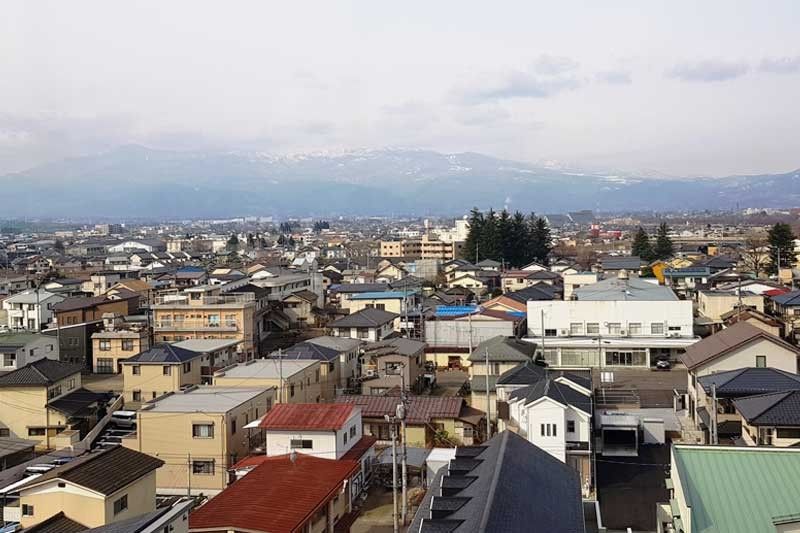
On March 11, 2011, an earthquake of magnitude 9 hit the coast of Japan with the epicenter approximately 70 kilometers east of the Oshika Peninsula of Tohoku region.
Often referred to as the Great Eastern Japan Earthquake, it was reportedly the most powerful earthquake ever recorded in the country and it is the fourth most powerful ever detected worldwide according to the United States Geological Survey.
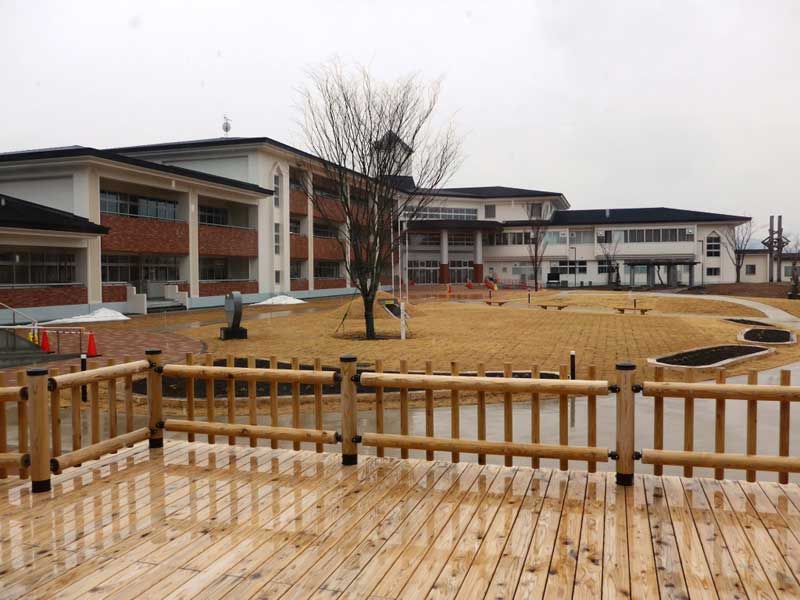
Iitate Elementary School.
The earthquake triggered a powerful tsunami that reportedly reached heights of up to 133 feet in Miyako in Tohoku’s Iwate Prefecture. In the Sendai area, water reportedly traveled up to 10 kilometers inland.
Following this, the outer housings of two of the six reactors at the Fukushima Daiichi Nuclear Power Plant in Okuma exploded, which followed a partial meltdown. Radiation levels near the plant peaked at 400 mSv/h (millisieverts per hour) that resulted in increased recorded radiation levels. On April 11, 2011, officials upgraded the disaster to a level 7 out of a possible 7, something not seen since the Chernobyl disaster in 1986.
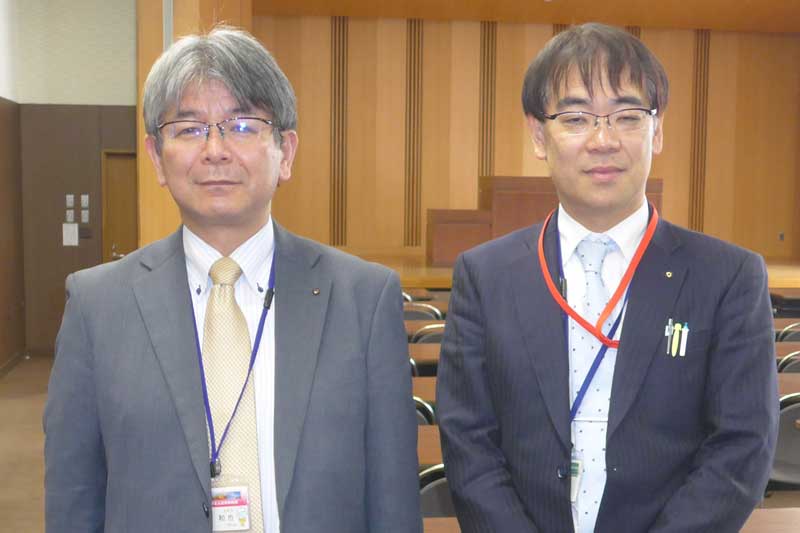
Fukushima Prefectural Government deputy director and assistant director for international affairs Yasunori Oshima and assistant director for the trade promotion division Kazuya Satou.
Harmful rumors about the produce of Fukushima linger to this day even if private and government officials have taken several steps to ensure the safety of the prefecture’s products. What people don’t realize is the Fukushima Prefecture is huge. At present, the only danger zone is actually within the perimeter of the nuclear plant, which is 2.7 percent of the prefecture’s area. Radiation levels have gone down and the government has taken steps to ensure it will remain low. According to reports, the air dose rates in the Fukushima Prefecture are relatively lower with Fukushima City at 0.14 mSv/h and Koriyama at 0.09 mSv/h, which are about the same as Seoul (0.12 mSv/h) and Singapore (0.10 mSv/h). Do note that Kerala in India is reportedly at 1.05 mSv/h. What is considered dangerous is above 3.8 mSv/h.
According to reports, during the height of the disaster, over 470,000 people were evacuated. Within six months, temporary housings for evacuees were built. The Japanese government built public housing (29,000 houses were built as of November 2018) for disaster-affected people, provided temporary support centers for livelihood for the elderly, provided watching services, consultation and advice services as well as mental and health care services to help rebuild communities. A total of $283 billion was allocated for this disaster with majority of it to be used for infrastructure. As of January 2019, there are about 53,000 evacuees left. 17,000 houses were relocated to higher lands as of November 2018 to protect them from tsunamis.
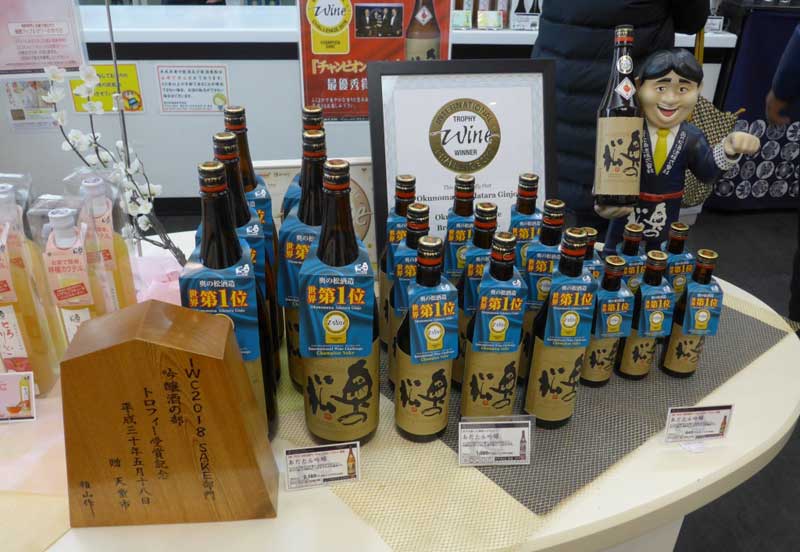
Internationally award-winning sake from Fukushima’s Okonomatsu Sake Brewery.
People worked hard to remove radioactive material in the area. Topsoil was removed and stored in non-inhabited areas to let time remove the radioactivity. Even tree barks were removed by hand in the areas with high mSv/h and safely thrown away. The community’s efforts have paid off because according to Japan’s Ministry of Foreign Affairs, as of January 2018, area of land where farming can be restarted has reached 89 percent. Marine food processing facilities that have restarted operations are at 96 percent as of January 2018.
The decommissioning process of the Fukushima Daiichi Nuclear power station is underway. This includes fuel removal from reactor buildings. Over 3,000 workers are working with robotics and bulldozers on this decommissioning effort, including the removal of radioactive debris. Import restrictions for products from Fukushima are improving as 30 countries have lifted the restrictions since 2011 and 49 countries have relaxed them.
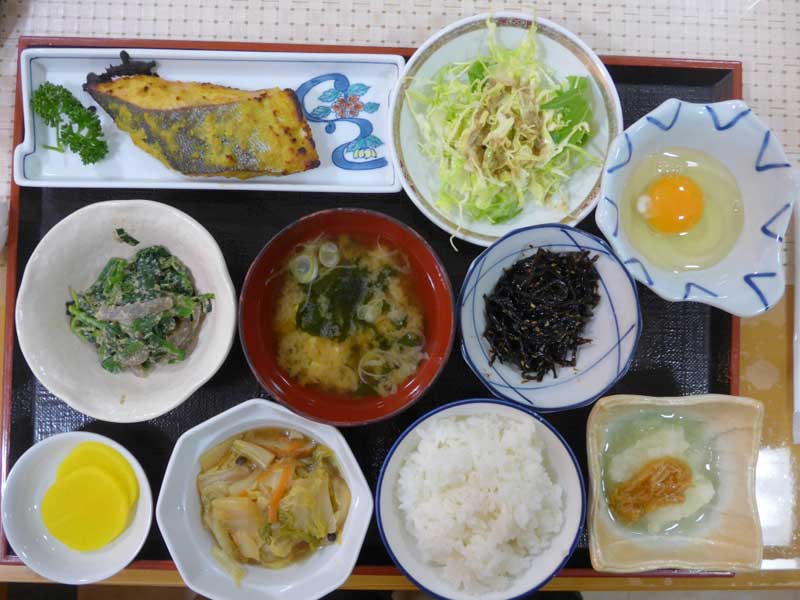
A Japanese breakfast consisting of Fukushima seafood, vegetables and the Fukushima rice, known to be one of the best in Japan.
In fact, it is so safe to go there that as Japan hosts the Olympics next year, the Olympic flame will arrive in Fukushima from Greece on March 20, 2020 and the relay will begin in Fukushima on March 26. The Olympic flame will travel across all 47 prefectures around Japan over 121 days before arriving in Tokyo for the opening ceremony. The torches that will be used for the relay will be made from recycled aluminum used for temporary housing during the evacuation. The baseball, softball and football games will be held in three disaster-affected areas.
Fukushima is known for having some of the best fruits, rice, seafood, sake and beef in Japan. These are what I enjoyed most about Fukushima. Sake was excellent at the Okonomatsu Sake Brewery, where I tried its internationally award-winning sake. Fukushima apples are unlike those I have tasted before. Though not yet in season, these apples tasted like they were injected with honey or sugar!
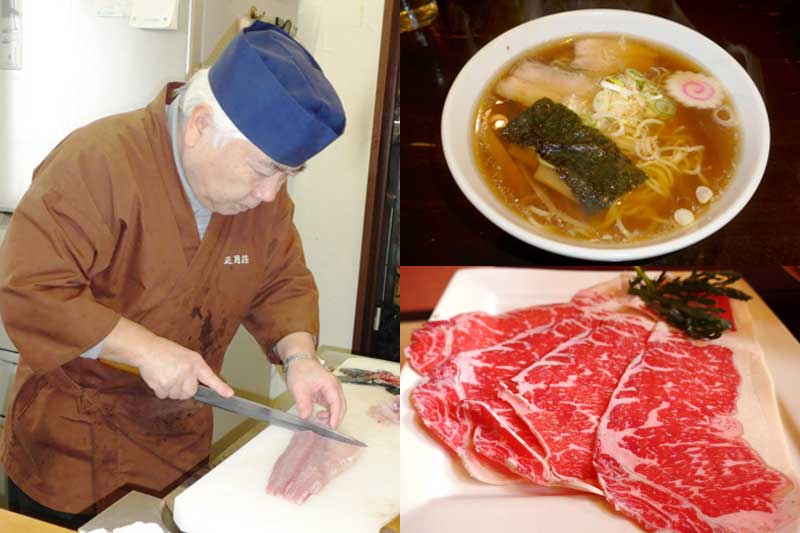
Clockwise: A chef prepares carp sashimi, Kitakata ramen from the Fukushima Prefecture is a soy-sauce based ramen made with niboshi, tonkotsu and vegetables and beautifully marbled Fukushima beef.
I also went picking strawberries, which were unbelievably sweet and probably one of the best I have ever tried. Best time to schedule fruit picking for strawberries is from January to May; cherries are best picked from June to July; peaches from July to September; Nashi pears and grapes from August to October; and apples from October to December.
Fukushima beef has wonderful marbling and is not as fatty as other Japanese beef. I had this twice; first, cooked in broth in a hot pot and the second time, grilled. Both were superb. Fukushima is also famous for its carp, famously prepared as sashimi as well as Kitakata ramen. I went out of my way to try this ramen that is named after the city of Kitakata, which has the highest per capita number of ramen establishments in Japan.
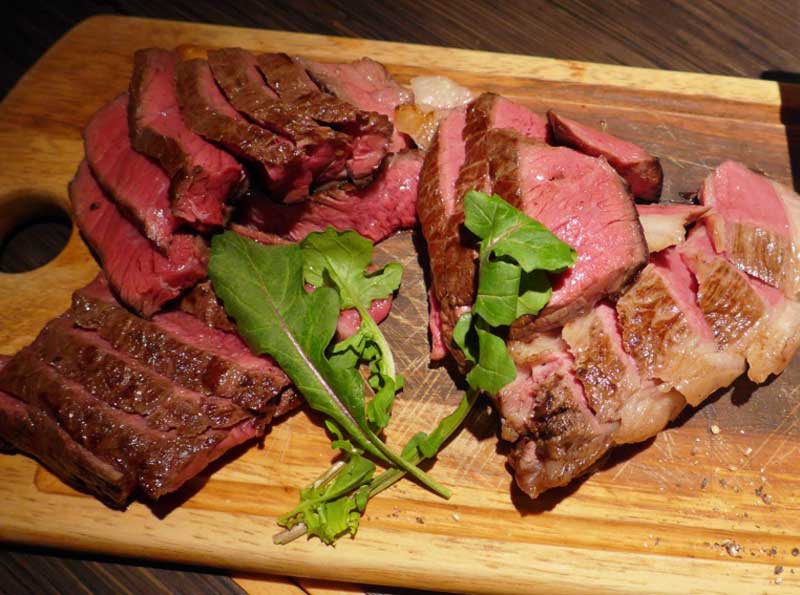
Delicious rump and blade meat.
Kitakata ramen broth is soy-sauce based and made with niboshi (dried sardines), tonkotsu (pig bones) and vegetables (sometimes chicken is also added to the broth). The ramen is made with hirauchi jukusei takasuimen or thick noodles that are easier to swallow. These noodles are matured for a long period of time for a firm texture so they can absorb the broth easily. I normally don’t eat breakfast but this became my highlight meal in Fukushima. Imagine having salmon, mackerel, scallop soup, Fukushima rice, delicious local vegetables and an egg all in one tray! It was a food lover’s heaven! I also ate fish, shrimps and oysters in Fukushima.
Japan has reportedly one of the highest levels of food standards in the world. Several samples of food are tested in Fukushima weekly to test radiation levels. These are tested mainly at the Fukushima Agricultural Technology Center. Brown rice, livestock products, cultivated edible mushrooms, marine fishery products, inner water-cultivated fish and vegetables and fruits have been sampled from April 1, 2017 to Feb. 28, 2018, and none of these products exceeded the standard limits for radiation. Only one sample exceeded the standard limit and it was a wild mushroom. Over 560,000 specimens of marine fish as of December 2018 have been monitored and 150 specimens a week are tested. All weekly monitoring results are published on the Fukushima Prefecture website. Even locals have taken their own initiative to make sure of their safety.
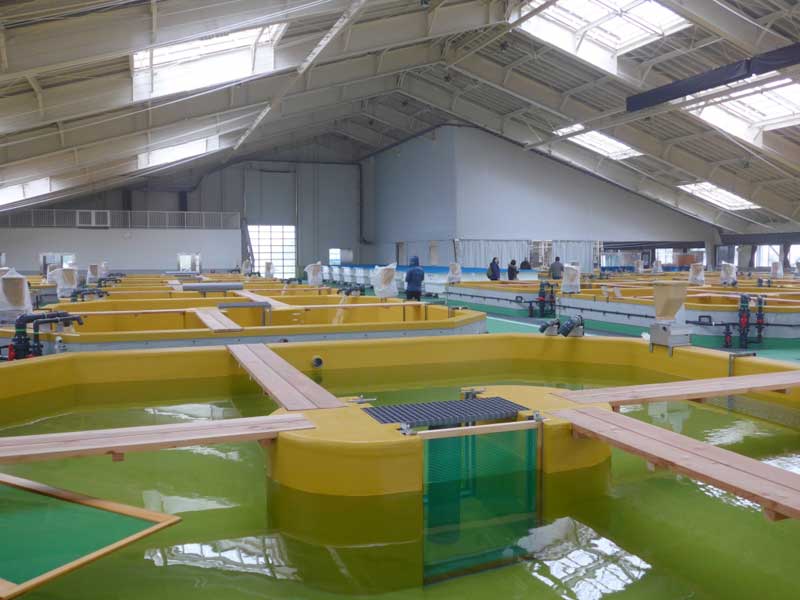
Fish tanks at the Fukushima Prefectural Fisheries Experimental Station.
I visited Iitate Elementary School, now rebuilt for students who have stepped into their school seven years after the earthquake. The school, too, has a machine outside to monitor the radiation levels. I also visited the Soma-Futaba Fisheries Cooperative, where I was introduced to the equipment in its market.
Another interesting visit was to the Fukushima Prefectural Fisheries Experimental Station, which is also trying to give back as it harvests eggs of fish (such as halibut and salmon) and raise them in tanks until they are big enough to survive when released to the open sea. This way, the community is assured that more of these fish will be in their waters and won’t be overfished.
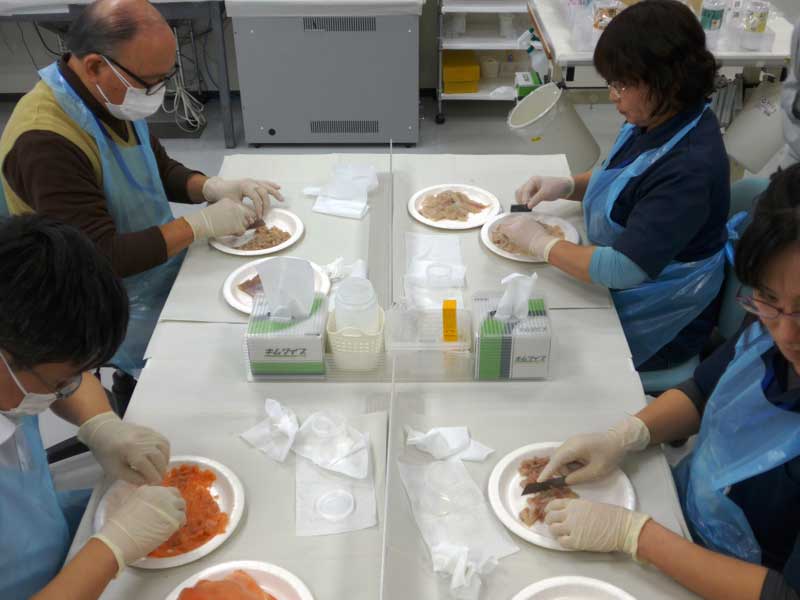
Food samples from Fukushima are prepared for radiation testing.
Fukushima has been through a lot and, slowly but surely, it is getting to what it used to be before the Great Eastern Japan Earthquake. Fukushima is a relatively undiscovered destination in Japan’s Tohoku region (I will soon feature the Tohoku region’s Yamagata Prefecture) and I would really recommend discovering the beauty of this place and its wonderful produce before it gets too well known and overcrowded with tourists.
* * *
(Follow me on Instagram @pepperteehankee.)
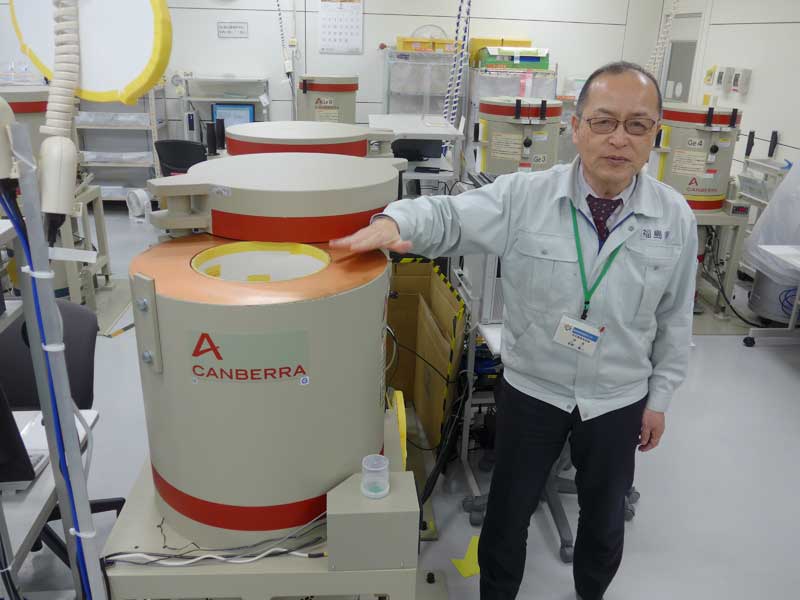
Director general of agricultural safety promotion department of the Fukushima Agricultural Technology Center Kenji Kusano with the radiation testing machine.
- Latest



























